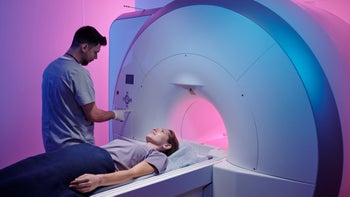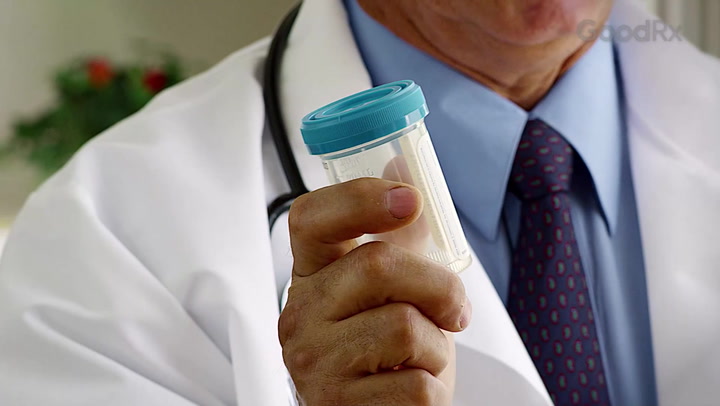
How Much Does an X-Ray Cost?
Key takeaways:
X-rays are a kind of electromagnetic radiation used to create images of the inside of your body to reveal broken bones, fractures, tumors, and other abnormalities.
An X-ray can cost about $300 — but the price depends on factors including whether you have insurance, the body part examined, as well as the number of views or images.
Most insurance plans, including Medicare, Medicaid, and Tricare, cover medically necessary diagnostic X-rays ordered by your doctor.
Table of contents

Medical X-rays are a type of radiation that emit electromagnetic waves through the body to create images of structures. Radiation is absorbed differently depending on the body part, which is why some areas are more visible in the images than others. For example, skeletal bones appear white because the calcium in your bones absorbs much of the radiation.
During an X-ray, your body, a body part or parts will be placed between an X-ray source and an X-ray detector, which then creates images called radiographs. X-rays are often used to detect broken bones, dental problems, pneumonia, and other abnormalities. X-rays are often used as a first-line imaging test.
How much does an X-ray cost?
The cost of an X-ray can be impacted by:
Whether you have insurance, what your plan covers, and any negotiated price
The type of facility where your X-ray is performed, such as a hospital or imaging center
The body part being examined
The number of views of the body part
Search and compare options
MDsave is a price-shopping tool for people without insurance and those who have high-deductible health plans. The site lists national and regional prices for healthcare services, including a variety of X-ray services. According to MDsave, the estimated national average cost for an X-ray is $279 for any one body part.
The following are cash prices (at the time of publication) for chest X-rays and complex X-rays for people without insurance or those with insurance who self-pay. It’s important to note that X-rays provided in outpatient settings, such as imaging centers, are generally less costly than those provided at hospitals.
City | Chest X-ray | Complex X-ray |
|---|---|---|
National average | ||
Atlanta | ||
Chicago | ||
Houston | ||
Kansas City, Missouri | ||
Las Vegas | ||
Orlando |
Having a health insurance plan can reduce or eliminate the cost of an X-ray because insurance companies have negotiated prices for in-network providers. If you have insurance, you may be responsible for out-of-pocket costs, such as meeting your deductible or paying a copay or coinsurance.
Sometimes, a referral for your X-ray will not be with a provider in your insurance plan’s network. Always double-check, because going out-of-network can cost you more.
Comparing imaging tests: X-rays and CT scans are used to take a closer look inside the body. Learn more about the differences between the tests and when you should use one instead of the other.
Scanning the skeleton: A DEXA scan is a special bone density X-ray that looks for bone thinning and bone loss, which can help diagnose conditions such as osteoporosis.
Undergoing radiation therapy: High-energy X-ray doses known as radiation therapy (or radiotherapy) are used for cancer treatment. Learn more about the types of radiation therapy and what to expect.
Do special X-rays like DEXA scans have different costs?
A dual energy X-ray absorptiometry scan — known as a DEXA scan and sometimes a DXA scan — calculates a person’s bone density and is often used to diagnose osteoporosis. At the time of publication, MDsave estimates that the national average for a DEXA in the spine, pelvis, and hips is $337, while a scan of the extremities, meaning the arms and legs, averages $281.
Does Medicare cover X-rays?
Yes, Medicare Part B covers diagnostic X-rays that are medically necessary when ordered by your doctor or another healthcare provider.
Your out-of-pocket costs depend on several factors:
After meeting your Part B deductible, you pay 20% of the Medicare-approved cost.
If you receive an X-ray in a hospital outpatient setting, such as an imaging center, you are also responsible for paying a separate facility copayment.
How do other insurance plans cover X-rays?
Under Medicaid’s mandatory benefits, X-ray services are covered.
Tricare covers many types of X-rays if deemed medically necessary. However, for dental X-rays to be covered, you must have a dental plan.
How can I shop for X-ray prices?
If you have insurance — or not
Whether you’re insured or uninsured, you can get an idea of how much the X-ray you need should cost by using online price estimation tools such as MDsave and New Choice Health.
Price estimation tools from hospitals and health insurance plans can help you calculate costs in advance:
Hospital price transparency: Since 2021, hospitals have been required to publish standard charges for services that can be scheduled.
Health plan price transparency: Since 2022, health insurance plans have been required to publish price information on certain covered treatments, services, and medications on their websites.
Read more like this
Explore these related articles, suggested for readers like you.
You can also see costs for certain outpatient services on Medicare’s procedure price lookup.
If you’re uninsured or plan to self-pay
If you self-pay or don’t have insurance, you can request a Good Faith Estimate (GFE) for your X-ray to find out expected charges and fees. You can ask for a GFE from facilities such as:
Hospitals
Some surgical centers
Lab centers
Imaging centers
Federally qualified health centers
Rural health centers
If the final bill for your X-ray is $400 or more above the GFE you received before the procedure, contact the healthcare facility or provider. Ask if they can update the bill to match the GFE, or try to negotiate a lower price. You also should ask if you're eligible for any financial assistance programs.
The bottom line
An X-ray can cost about $300, but factors such as health insurance, the body part being scanned, and the facility where the service is provided can affect your out-of-pocket expense.
You can shop for an X-ray in several ways. If you have insurance, make sure you are using an in-network provider and search your insurance plan’s website for information under the health plan price transparency rules. Regardless of your insurance status, you can review prices online using price estimation tools such as MDsave and New Choice Health for the specific kind of X-ray you need. And if you don’t have insurance or you plan to self-pay, ask for a Good Faith Estimate (GFE) to find out expected charges and fees for your X-ray upfront — and to be protected if your final bill is more than $400 above your GFE.
Why trust our experts?



References
Centers for Medicare & Medicaid Services. (2021). Guidance on good faith estimates and the patient-provider dispute resolution (PPDR) process for providers and facilities as established in surprise billing, Part II; interim final rule with comment period (CMS 9908-IFC).
Centers for Medicare & Medicaid Services. (2022). No surprises: Understand your rights against surprise medical bills.
Centers for Medicare & Medicaid Services. (2023). Consumers.
Centers for Medicare & Medicaid Services. (2023). Hospital price transparency.
Centers for Medicare & Medicaid Services. (2023). The No Surprises Act’s good faith estimates and patient-provider dispute resolution requirements.
Centers for Medicare & Medicaid Services. (2023). Transparency in coverage.
Centers for Medicare & Medicaid Services. (2023). Use of pricing information published under the transparency in coverage final rule.
MDsave. (2023). Bone density DXA extremity.
MDsave. (2023). Bone density DXA scan.
MDsave. (2023). Chest X-ray - Atlanta, Georgia.
MDsave. (2023). Chest X-ray - Chicago, Illinois.
MDsave. (2023). Chest X-ray - Houston, Texas.
MDsave. (2023). Chest X-ray - Kansas City, Missouri.
MDsave. (2023). Chest X-ray - Las Vegas, Nevada.
MDsave. (2023). Chest X-ray - Orlando, Florida.
MDsave. (2023). Chest X-ray.
MDsave. (2023). Complex X-ray - Atlanta, Georgia.
MDsave. (2023). Complex X-ray - Chicago, Illinois.
MDsave. (2023). Complex X-ray - Houston, Texas.
MDsave. (2023). Complex X-ray - Kansas City, Missouri.
MDsave. (2023). Complex X-ray - Las Vegas, Nevada.
MDsave. (2023). Complex X-ray - Orlando, Florida.
MDsave. (2023). Complex X-ray.
MDsave. (2023). X-ray.
Medicaid.gov. (n.d.). Mandatory & optional Medicaid benefits.
Medicare.gov. (n.d.). X-rays.
National Institute of Biomedical Imaging and Bioengineering. (2022). X-rays.
Tricare. (2023). X-rays.


























